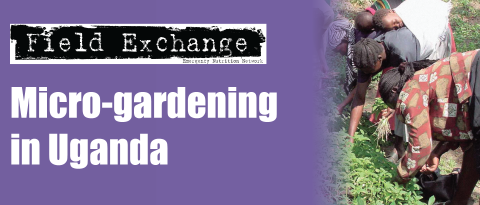Intervention Study on Cases Presenting Precursor Signs of Kwashiorkor
By Dominique Brunet and Frances Mason
Dominique Brunet is currently working as a nutritionist with SC UK. She has 10 years of experience with SC UK, ACF and Oxfam.
This article is based on a report written by Dominique Brunet which was, in turn, based on the findings of research undertaken by Save the Children UK in DRC.
A further study was undertaken by SC UK1 based on two hypotheses:
Hypothesis 1: It is possible to develop reliable admission criteria for children at risk of developing oedematous malnutrition.
Hypothesis 2: The admission of these children at risk into a supplementary feeding programme (SFP) will prevent the development of oedematous malnutrition.
One hundred children from the health zone of Goma (North Kivu province) aged 15 - 96 months, showing precursor signs of kwashiorkor (bloated face, discoloured and/or uncurled hair and oedema without signs of indentation), were admitted into one of two SFPs for four weeks. These SFPs were sited close to a TFC, hence allowing all cases who developed kwashiorkor during the study to be immediately referred to the adjacent TFC.
In the first SFP (Kanyaruchinya), the first 50 cases showing the precursor signs of kwashiorkor were admitted into the programme and received a supplementary ration2 for 4 weeks, followed by a home visit twice a week.
In the second SFP (Mujda), the first 50 children showing the same precursor signs of kwashiorkor were not admitted into the programme, but simply placed under observation and monitored closely, twice a week, through home visits over the four week period.
A standard questionnaire was used to collect information on the age, sex, weight, height and type of precursor signs on admission and again at each home visit. This data were analysed using EpiInfo v.6.04. Only 8% of the children enrolled at the start of the study were eligible for admission into the SFP based on wasting (weight/height (W/H)). There was a statistically significant difference in W/H z-scores between the two groups at the start of the study (p<0.001), between the two groups at the end of the study (p<0.05) and in the intervention group before and after the four weeks of intervention (p<0.05). There was no significant difference between the two groups in W/H in zscores in the control group between the start and end of the study.
The cases receiving a supplementary ration who did not go on to develop kwashiorkor lost the bloatedness in the face, but the hair signs remained throughout the course of the study. In the control subjects, all the pre-kwashiorkor signs present at the start continued throughout the study.
In the intervention group receiving the supplementary ration, 6% of the cases developed kwashiorkor, compared to 22% of the cases in the control group who did not receive a ration. Therefore the probability of developing kwashiorkor amongst children with pre-kwashiorkor signs was less amongst the children receiving a supplementary ration than those without - relative risk of 0.27 (95% CI 0.08, 0.92).
Amongst those that developed kwashiorkor in the intervention group, the nutritional oedema appeared between days 7-18 of admission, averaging at 11 days. In the control group the average was 20 days (appearing between 6-30 days).
Conclusions
Of the 100 children participating in the study, only 14% developed kwashiorkor during the course of the four weeks. However, the intervention highlights a confounding factor in that the supplement provides a protection role in the development of kwashiorkor. The majority (92%) of cases did not have the criteria to enter the SFP (based on wasting) and hence would not normally be eligible for a supplementary ration. It is important to note that the study only continued for four weeks, and hence any further evolution of the cases is not known after this period.
While the results only partially support hypothesis one, the second hypothesis is fully supported. The study showed that that cases showing precursor signs of kwashiorkor and who receive a food ration have less probability of developing kwashiorkor than similar cases who do not receive a ration.
The conclusions of the study resulted in SC UK proposing to its partner organisations to admit all cases with precursor signs of kwashiorkor into the supplementary feeding programmes. It is also recommended that this study is repeated in another area /country in which kwashiorkor is prevalent in order to validate the findings.
For further information, contact Frances Mason, Nutrition Advisor, Save the Children UK, email:F.Mason@savethechildren.org.uk
1Save the Children UK avec la collaboration due ProNaNut (Programme National de Nutrition) (2004), Etude d'intervention sur des sujets presentant des signes precurseurs du kwashiorkor. Brunet D.
2The ration received was 2.6 kg of maize flour, 500g haricots beans, 210g of oil and 175g of sugar for week 1; 700g of CSB, 500g haricot beans, 210g of oil and 175g of sugar for weeks 2, 3 and 4. The daily ration equivalent came to 1900 kcal of which 9% was protein and 31% lipid in week 1 and 975 kcal with 13% protein and 35% lipid in weeks 2, 3 and 4.
Imported from FEX website


